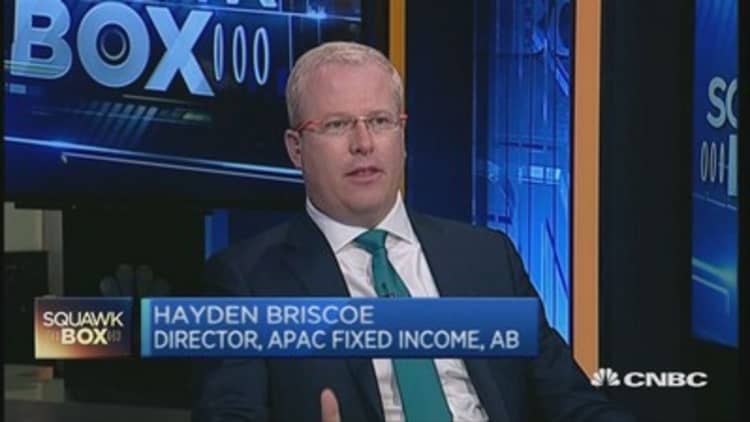A remote harbor near Inverness might seem an unlikely gauge for the oil price crash but the freezing waters of the Cromarty Firth have become a worrying barometer for energy veterans.
More than a dozen offshore oil rigs, each weighing thousands of tonnes, have been quietly parked in the Scottish firth, the highest number in more than a decade, after a plunge in crude prices that has nearly killed North Sea exploration.
Two rigs have been towed away to be scrapped in Turkey, while more are expected to arrive in the coming weeks and months, threatening to fill the inlet to capacity.
The port itself, normally filled with cruise ships from spring to autumn, is considering a move into oil and gas decommissioning.
Brent crude has plummeted from a summer 2014 peak of more than $115 a barrel to less than $30, hit by a US supply glut and weaker Chinese demand.
"In previous oil crashes there has been a sense that it will come good again — maybe in 18 months the price will bounce back," says Bob Buskie, chief executive of the Cromarty Firth Port Authority.
"But people have lost sight of the dynamic between Saudi [Arabia] not adjusting output and America still throwing money at the fracking game.
We have ended up awash with oil."

The North Sea "doesn't work at $30 a barrel", he says.
Indeed, the number of operational rigs, having gone from 57 to 27, is now thought likely to fall to just 19 by the summer.
"One by one, the operators are looking at this and saying, 'this is just not happening for us'."
Increasing numbers of idled rigs anchored in the firth, some crewed and kept ready to go to sea — "hot stacked" — and others shut down completely — "cold stacked" — are part of a wider global decline.
Oil companies have delayed almost $400bn of investment, according to the consultancy Wood Mackenzie, a halt in spending that has sent the prices charged by rig operators tumbling.
Data from IHS Energy show that daily rates for hiring ultra-deepwater rigs, used in areas such as the Gulf of Mexico and offshore Angola, have fallen sharply over the past two years.
The average new fixture rate for drillships fell to just $321,000 a day in December, more than $100,000 below levels a year ago and $200,000 less than at the start of 2014.
Utilisation rates for such rigs have also slumped, to an all-time low of 77 per cent.
Shipbrokers add that average usage of all rigs has declined heavily in north-west Europe, a fall that reflects a collapse in activity in the UK North Sea, one of the most expensive regions in which to produce oil.
Rig operators such as Transocean, Seadrill and Maersk park rigs when drilling contracts come to an end or clients — an oil major, say, such as BP or Royal Dutch Shell — decide not to take up the option of an extension.
A hot-stacked rig typically costs the customer half the daily rate: a skeleton crew stays on board.
The next stage is to remove the workforce and turn off the power, leaving the port authorities to keep a watchful eye.
Six cold-stacked rigs are in the firth.
More from the Financial Times :
Schlumberger cuts 10,000 jobs amid oil price rout
Apple hires leading virtual reality researcher
Aston Martin's £1m licence to thrill
Another half dozen are kept running, while a further two are moored alongside quays.
Space is available for up to 19 rigs.
The biggest at anchor, the 35,568 tonne West Phoenix, owned by North Atlantic Drilling, a subsidiary of Seadrill, is a deepwater vessel able to withstand Atlantic storms and powered by thrusters.
It is expected to head to the west of Shetlands, where it will resume work for France's Total in March.
But the fate of many of the rest is unclear. Few, if any, operators are commissioning upgrades for rigs in the Cromarty Firth.
"If you'd been here a year ago, you wouldn't have been able to move.
You wouldn't have got your car parked, there was so much activity.
It has changed that quickly. It has pretty much fallen off a cliff," says Mr Buskie.
Local employment has suffered as a result.
Up to 600 people would be contracted for a rig upgrade in the port, a project that could last three to six months.
"That's dried up . . . a lot of people have had to move industry."
More rigs may be scrapped. If so, Mr Buskie believes the firth could benefit.
The port has recently spent £25m on a new quay, where ageing North Sea platforms, as well as rigs, could be dismantled.
"It is something we want to look at," he says. "Decommissioning is going to be accelerated."


